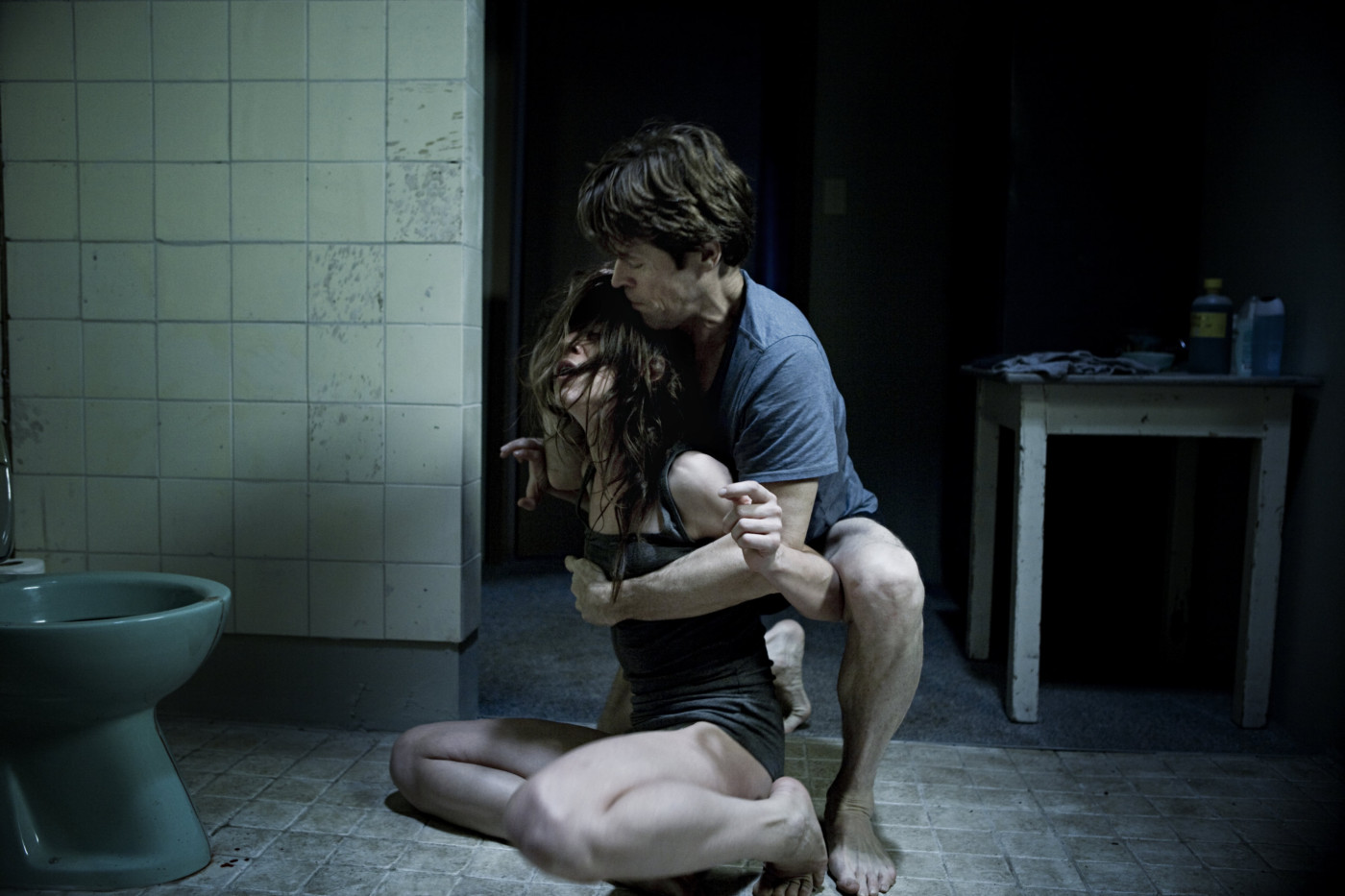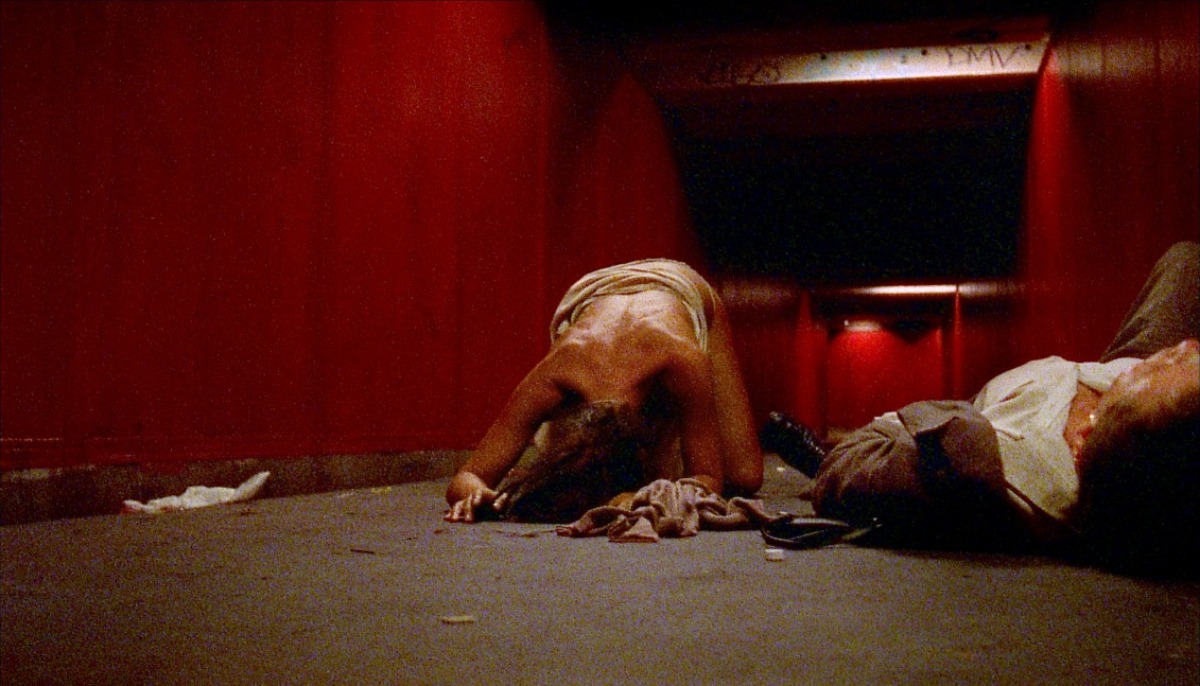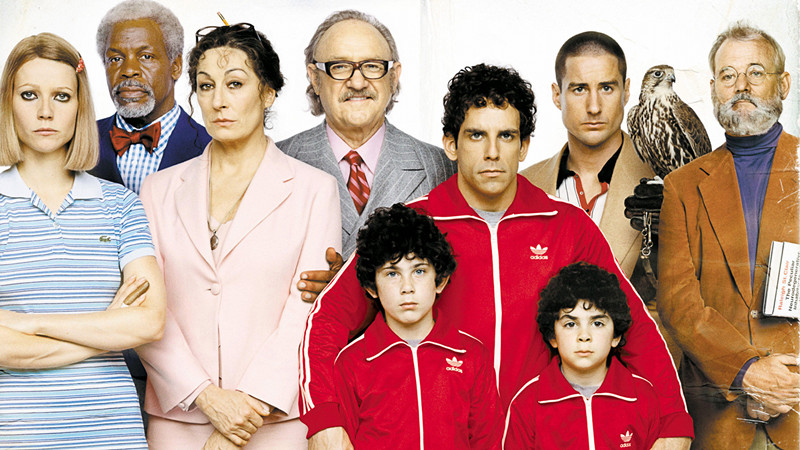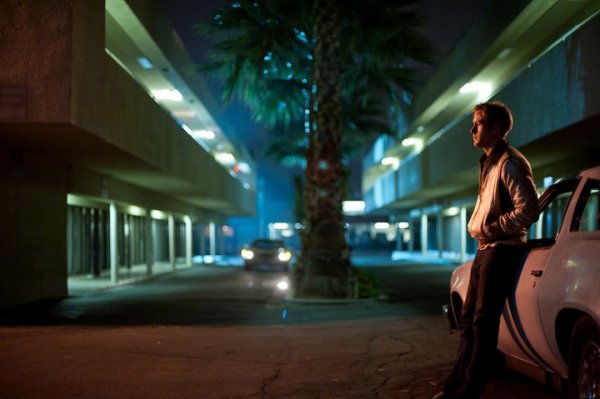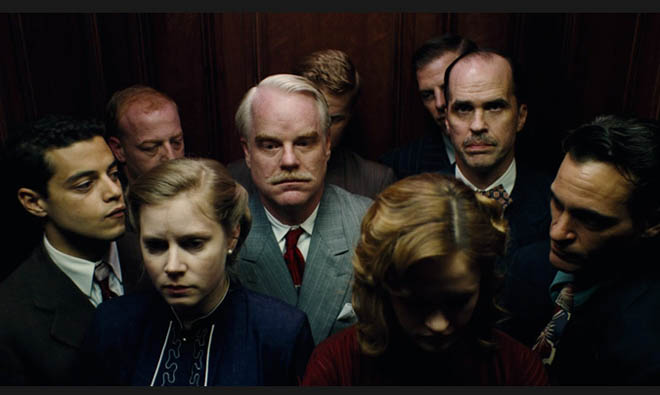5. Lars von Trier
Lars von Trier’s career has now spanned over 20 years, and unlike most other filmmakers over that period of time, Trier has managed to stay relevant by continuing to take risks with his films. His films have become more controversial with time, and the controversy surrounding Trier and his films have served as a brilliant marketing tool. Everyone is excited to see what cinema’s bad boy is up to and the reception is usually divisive.
Much of Trier’s canon has consisted of films that can be loosely grouped into distinct thematic trilogies. The first of which is the Europa trilogy, comprising The Element of Crime (1984), Epidemic (1987) and Europa (1991). These films examine the social standing of postwar Europe and what lies ahead for the continent through its examination of idealistic and naïve characters. The influence of Film Noir on Trier is evident upon viewing these films.
Trier’s second trilogy is his ‘Golden Heart Trilogy’, featuring Breaking the Waves (1996), The Idiots (1998), and Dancer in the Dark (2000). In Trier’s words, these films were about “good women overwhelmed by a bad world.” These films were brutal in their depiction of the female main characters and their struggle against outside forces. The Idiots was received with a great deal of controversy with its depiction of unsimulated sex, which was almost unheard of in films that aren’t of the pornographic nature. Because of the brutality inflicted upon the women in these films, it was the first time (it wouldn’t be the last) that Trier was accused of misogyny.
Dogville (2003) and Manderlay (2005) were part of his US trilogy and were films taking place in the US on near-barren soundstages, which was a highly unusual turn for Trier. These two films examined the darker past of America and dispelled the notion of a moral high ground that sometimes plagues American patriotism. Trier calls these films “a series of sermons on America’s sins and hypocrisy”. The final film of the trilogy, Wasington, has not yet been produced. In addition to being labeled as a misogynist, Trier was now accused of being anti-American.
The Depression Trilogy is his latest and consists of Antichrist (2009), Melancholia (2011) and Nymphomania (2014). The trilogy deals with female characters that are struggling with grief and depression to degrees. Antichrist, starring Charlotte Gainsbourg and Willem Dafoe, caused uproar when it debuted at the Cannes Film Festival in 2009.
Trier was again accused of misogyny (and actually received a tongue-in-cheek award for it) as Gainsbourg’s character was subjected to brutality (some of it self-inflicted) and her character is plagued by darkness in the later parts of the film. Nymphomanic, Trier’s latest entry into the Depression Trilogy lived up to its title with frequent extended sequences of graphic sexuality. With its graphic depiction of sexuality throughout the film, it polarized audiences, even if the film was generally received with acclaim.
Whether or not one cares for von Trier’s films, it cannot be denied that his films continue to push the envelope of what is acceptable for a filmmaker. In particular, his ability to extract fantastic performances (especially from his female cast), brilliant use of music, slow motion and his willingness to tackle difficult subject matter in his films make him a cinematic force to be reckoned with. In an era when the concept of political-correctness may have gone overboard, it is refreshing to see a filmmaker who is not afraid to pursue his vision, even if many do not agree with his message.
4. Gaspar Noe
Gaspar Noé, son of Argentine artist Luis Felipe Noé, has only made three feature-length films, but the films are strikingly memorable and have made Noé a filmmaker to watch. Noé has acknowledged the huge influence that Stanley Kubrick (primarily 2001: A Space Odyssey) had on him. Taking his cue from Kubrick, his films are visually revolutionary and are unlike almost anything else.
Noé’s first feature-length film, I Stand Alone (1998), tells the story of “The Butcher”, an unnamed French horse butcher with a very dark past involving sexual abuse at the hands of a priest. Most disturbingly, The Butcher develops incestuous feelings for his daughter. When he discovers blood on her shirt, he prematurely thinks she was rape (it was menstrual fluid) and murders the man whom he thinks is responsible for the rape that never happened. The rest of the film involves his escapades during his incarceration for the murder and his consistent failure at rehabilitation into French society.
The critical reception to the film was generally positive. Praise was given to the film’s unique camera work, which included quick camera movements accompanied by loud, sudden noises. This technique was an excellent contrast to the normally stationary camera work. That being said, the film can be hard to digest for some because of its troubling portrayal of incest.
Noé’s next film, Irreversible (2002) is an even more adventurous film. Using an unconventional narrative, the film follows two men who seek to avenge Vincent Cassel’s girlfriend (Monica Belluci) who falls victim to a brutal rape, which was easily among the most violent rape scenes in history. Closely associated with the New French Extremity movement, the film challenges viewers with its disconcerting cinematography.
The camera oftentimes seems to be detached from the action and floats in and out of the scene with liberty. Reaction to the film was split, with many taking offense to the violent rape scene which cause many walk-outs during its screening at Cannes in 2002. Regardless of how one feels about that particular scene, the innovative cinematography, script and soundtrack are impossible not to appreciate.
Noé’s next film, Enter the Void (2009), is his most adventurous film to date. After an American drug dealer is killed in Tokyo, the film follows his consciousness as it travels throughout Tokyo in an out-of-body experience of sorts as he lives through past experiences in his life and oversees the aftermath of his death. Even more so than the previous film,
Enter the Void employs startling cinematography and brilliant neon color schemes in what makes for one of the more unique visual experiences one can experience at the cinema. Like Irreversible, the reception to the film was mixed with critics praising Noé’s visual inventiveness but also criticizing the film’s excessive length, overly complex narrative, and below average performances. Either way, Noé’s films are among the most visually distinctive in cinema and he is clearly on the cusp of greatness.
3. Wes Anderson
Anderson occupies a unique place that lies somewhere in between that of an indie film filmmaker and that of a commercial filmmaker. Many of his films don’t screen at large theaters, but are also usually more financially successful than the average indie film, showing the rare ability to appeal to both the arthouse and commercial audiences. With his unique, tongue-in-cheek scripts and extremely stylized filmmaking, Anderson has deservedly earned the title of an auteur.
Anderson first gained recognition with Bottle Rocket in 1996. A humorous crime film starring Owen and Luke Wilson, the film did not do well commercially. Even so, the film was received well by critics (and personally endorsed by Martin Scorsese) and by audiences on the festival circuit. Bottle Rocket has become even more appreciated film as the years have passed. Rushmore (1998) marked the beginning of a fruitful partnership with Bull Murray, and was praised for its humor and unique deliver, even if some of that humor was lost on the mainstream audience. Murray has been in every Anderson film since.
The Royal Tenenbaums (2001) is generally considered Anderson’s masterpiece. A quirky and absurd film that follows an artistic family whose father leaves his sons to pursue their interests. The reception to the film was very positive and praise was given to Anderson’s brilliant use of irony, uncomfortable humor and clever camerawork made the film an instant classic. He had finally come into his own as a filmmaker.
All of his subsequent films have shadows of similar techniques and themes. Some of which includes frequent use of the take/double take, distinct color schemes, humorous monologues and a strange use of the futura typeface for his titles. With the release of his latest, The Grand Budapest Hotel (2014), Anderson has proven that he continues to be a filmmaker that excels in delivering light-hearted and quirky films that delight audiences around the world.
2. Nicolas Winding Refn
Winding Refn first came into his own as a filmmaker with the Danish film Pusher (1996). He would eventually film a Pusher trilogy. The film follows a Copenhagen drug dealer named Frank who is attempts to pay back a debt to his criminal bosses because of a drug deal that goes horribly wrong. These films were immensely successful in Europe and would also find a small audience in the U.S. Refn used the success of this film to catapult the rest of his career in the U.S. and Europe.
In 2008, Bronson proved to be a great critical success for Winding Refn, gathering acclaim at the festival circuit. A film about the famous British prisoner Michael Gordon Peterson, the film was brutal, yet funny. Refn handled Thomas Hardy and his animalistic performance brilliantly and this film was arguably his most successful film to date.
It was Drive in 2011 that propelled Refn into the mainstream. Ryan Gosling’s unnamed character is a loner with sparse dialogue, whom instead relies more on a nuanced performance to give the character an underhanded complexity. As he falls in love with Irene (Carry Mulligan), Gosling’s character is taken out of his comfort zone and is forced to confront his feelings (as well as a multitude of antagonists).
The film is unique in its depiction of violence. Contrasted brilliantly with the unemotional tendencies of the Driver, the scenes of violence in the film have a startling effect on the audience. Add to the mix a brilliant sound track, and a vivid visual and the result was a truly remarkable film.
Only God Forgives (2013) was not received as warmly as drive, but praise was given to the visual style in the film. The Bangkok setting is drenched in red and pink neon lighting that accentuates the performances in the film. As in Drive, the soundtrack is excellent and serves as an effective narrative device in place of copious dialogue from the cast.
Ryan Gosling’s character Julian, a Muay Thai boxer says even less than his predecessor in Drive and the violence in this film is even more extreme. Refn draws out the intensity of Gosling’s character by accentuating his internal struggles rather than his limited outward expression. The film is even more extreme than Drive, and subsequently the film alienated some audience members after the high expectations from Drive.
1. Paul Thomas Anderson
Certain filmmakers have tremendous expectations for their films, and among modern filmmakers, P.T. Anderson may have the highest level of expectation. Carefully selecting the films he chooses to direct, Anderson has created a number of modern masterpieces. These include Boogie Nights (1997), Magnolia (1999), Punch-Drunk Love (2002), There Will be Blood (2007) and his most recent, The Master (2012). With the exception of a few stylistic and thematic similarities, his films remain strikingly distinct from each other and fans eagerly wait for what each new groundbreaking film will bring.
Many great filmmakers went their entire careers using similar techniques throughout all of their films. Hitchcock, Kubrick and Scorsese are among the auteurs who had/have distinct visual traits that make their films almost immediately identifiable with their creators. Anderson differs in that his recent films have shifted away from some of the techniques that his earlier films memorable.
In Boogie Nights and Magnolia (and to a lesser degree, Punch-Drunk Love), Anderson thrived on the use of long, Steadicam shots that capture scenes with a high amount activity and movement and show a youthful exuberance on the part of the director. These early films showed echoes of some of Scorsese’s best films. With There Will Be Blood and The Master, Anderson instead uses slower movement, and carefully controlled framing within the lengthy Steadicam shots. The purpose of this shift in technique is related to the shift of emphasis in his films from an ensemble, to films that focus instead on 1 or 2 characters.
Thematically, Anderson’s films run the gamut from dysfunctional families and surrogate fathers to the relationship between capitalism and religion. With entertaining screenplays involving the porn industry, the early oil industry and a thinly veiled critique of L. Ron Hubbard and scientology, Anderson takes his audiences into worlds that are rarely explored. Filmgoers eagerly wait for what is next for Anderson.
Author Bio: Sumner works as an analyst for a private company. He knew cinema would play an integral role in his life when he started playing hooky in high school in order to watch more films.
